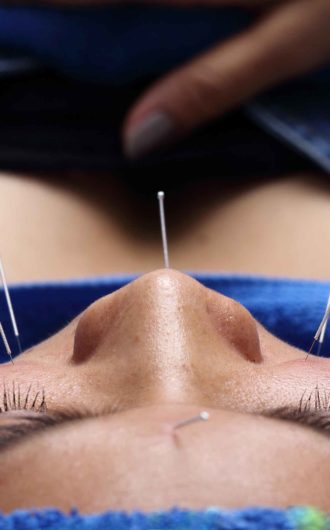At first glance it may be difficult to see a connection among the different forms of anxiety. They differ by the situations that induce them, according to the National Institute of Mental Health. Yet, they share features of excessive anxiety and related behavioral disturbances. Anxiety disorders can interfere with daily activities such as work, school work, and relationships.
Below is a closer look at four of the most common forms of anxiety.
Generalized Anxiety Disorder
People with generalized anxiety disorder (GAD) are worrywarts even when there is nothing to worry about. For instance, they may fear that something bad is about to happen, although there is no apparent danger. They tend to be overly concerned about work, family, and health. People suffering from GAD find it difficult to control their worry and feel it is out of their control.
The disorder affects almost 7 million adults in the U.S., but less than half receive treatment. GAD rarely occurs alone, according to the National Institute of Mental Health (NIMH), and is often accompanied by another anxiety disorder, depression or substance abuse.
According to the American Psychiatric Association, GAD is often confirmed if the anxiety and worry are difficult to control and are associated with at least three of the following symptoms for most days for the past six months:
- Restlessness, feeling keyed up or on edge
- Being easily fatigued
- Difficulty concentrating or mind going blank
- Irritability
- Muscle tension
- Sleep disturbance (difficulty falling or staying asleep, or restless, unsatisfying sleep)
Panic Disorder
Panic attacks are sudden and often unexpected periods of intense fear that come on quickly and last for several minutes. They can strike any place and at any time—even when driving. People often mistake them for heart attacks. For fear of experiencing another attack, people begin to avoid places, situations, or behaviors they associate with the attacks. More severe cases can result in another anxiety called agoraphobia, which causes intense fear of public places.
Common Symptoms May Include:
- Pounding heart or fast heart rate
- Sweating
- Trembling or shaking
- Shortness of breath
- Feelings of choking
- Chest pain or discomfort
- Nausea or abdominal distress
- Dizziness or feeling lightheaded
- Chills or feeling overheated
- Numbness or tingling
- Feelings of unreality or being unconnected to oneself
- Fear of going crazy or losing control
- Fear of dying
About 6 million adults in the U.S. have panic attacks. They are more common in women.
Social Anxiety Disorder
Social anxiety is often confused with shyness, but shyness is usually temporary and not disruptive. People with social anxiety disorder, on the other hand, display such fear of social interactions that it interferes with their daily lives. Social anxiety is suspected if a person has the following symptoms for more than six months:
- Being afraid of or worrying about social situations, such as meeting new people or eating in front of others
- Feeling very self-conscious in front of others and worrying about offending others or being humiliated, embarrassed, or rejected
- Avoiding social situations that cause fear and anxiety, feeling dread or doom leading up to a feared situation, or being very uncomfortable if able to stay in the situation
- Feeling fear or worry about a situation greater than the actual threat and beyond what most people would feel
- Having problems at work, school, or in relationships due to the symptoms
- Changing the daily routine in response to the symptoms
Social anxiety is one of the most common forms of anxiety and afflicts roughly 15 million adults in this country.
Obsessive-Compulsive Disorder
Although obsessive-compulsive disorder, or OCD, is now placed in a category separate from anxiety, the two remain closely linked, and some mental health professionals still consider it an anxiety disorder. People with OCD may have symptoms of obsessions, such as repeated thoughts or urges, and compulsions, which are repetitive behaviors in response to those obsessions. Yet, the behaviors may bring only brief relief from the anxiety.
Common Obsessions May Be:
- Fear of germs or contamination
- Unwanted, forbidden, or taboo thoughts involving sex, religion, and harm
- Aggressive thoughts toward others or self, such as hurting a loved one
- Having things symmetrical or in a perfect order
Common Compulsions Include:
- Excessive cleaning and/or handwashing
- Ordering and arranging things in a particular, precise way
- Repeatedly checking on things, such as repeatedly checking to see if the door is locked or the oven is off
- Compulsive counting
Over 2 million adults in this country suffer from OCD.
The First Step
Do you think you might have anxiety?
Sometimes self-care activities can damp down the emotions. But if the anxiety continues and is interfering with your life, it probably is time to get a professional opinion.
Start with your primary care physician. Your symptoms may actually be due to a medical condition. Cardiac issues and respiratory conditions and other medical illnesses can cause similar indicators.
However, a mental health professional who specializes in diagnosing and treating mental health disorders may be warranted for severe anxiety.
The bottom line is the symptoms do not go away on their own. Only you can take control.
Anxiety: When It’s Time to Worry
Anxiety is not always a bad thing. It can be a strong motivator and help people meet deadlines and athletes perform better under pressure. It can also be lifesaving and trigger the body’s “fight or flight” response, saving you from an untoward event. Sometimes, however, the anxiety lingers—even when the source of concern has passed. At times the anxiety appears when there is no visible threat. When it persists for a period of time and begins to impede one’s normal daily activities, in all probability it has moved from an annoying tendency to an anxiety disorder.



 4 min read
4 min read





